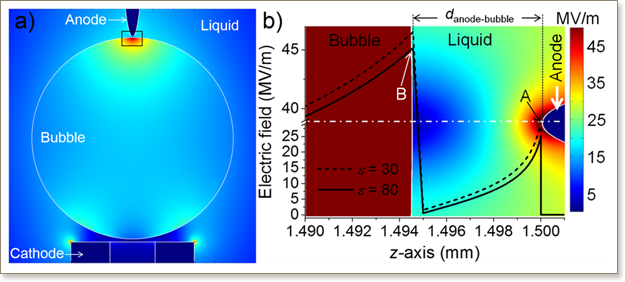


We investigated the effect of a liquid's electrical conductivity (EC) on the physical characteristics of electrical discharges in liquids with gaseous bubbles. Argon gas was supplied into the liquid to form an array of gaseous bubbles in between two electrodes (a pin-to-hollow electrode setup). Methanol and water were considered as base liquids, representing a low and a high dielectric permittivity (ε) liquid respectively, while potassium chloride (KCl) was added to control the EC of the liquids. When increasing the EC of the liquids, we found that the discharge probability was reduced by 46% for in-water and 38% for in-methanol discharges. We also found that the injected charge decreased by ~4 µC as the EC increased. Moreover, as the gap distance increased from 1 to 2.5 mm, the injected charge decreased by 2 µC for in-water discharge and by 4 µC for in-methanol discharge. The plasma emission is another important parameter in characterizing discharges. With increasing the EC, the plasma emission volume decreased linearly by a factor of ~5. The plasma lifetime was shortened by around 33% for in-water and 20% for in-methanol discharges in the case of d = 1 mm, while the decrease was 40% for in-water and 30% for in-methanol discharges in the case of d = 2.5 mm. Using the broadening characteristics of the Hα line, the electron density was estimated during the first 100 ns by ~3 × 1017 cm−3 for in-water discharges and by ~2 × 1018 cm−3 for in-methanol discharges, and it decreased by about one order of magnitude after 800 ns; note that n e dependence on the EC was not significant. The reported findings provide further understanding of electrical discharges in bubbled liquids and highlight the influence of a liquid's EC, which are useful in the development and optimization of the applications based on such process.